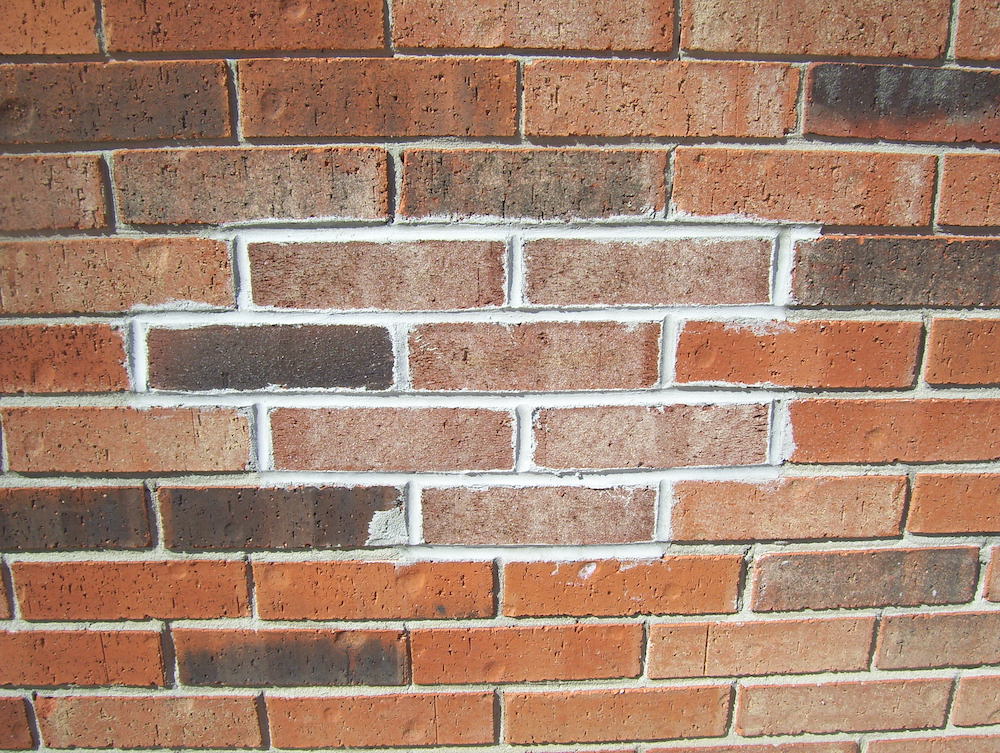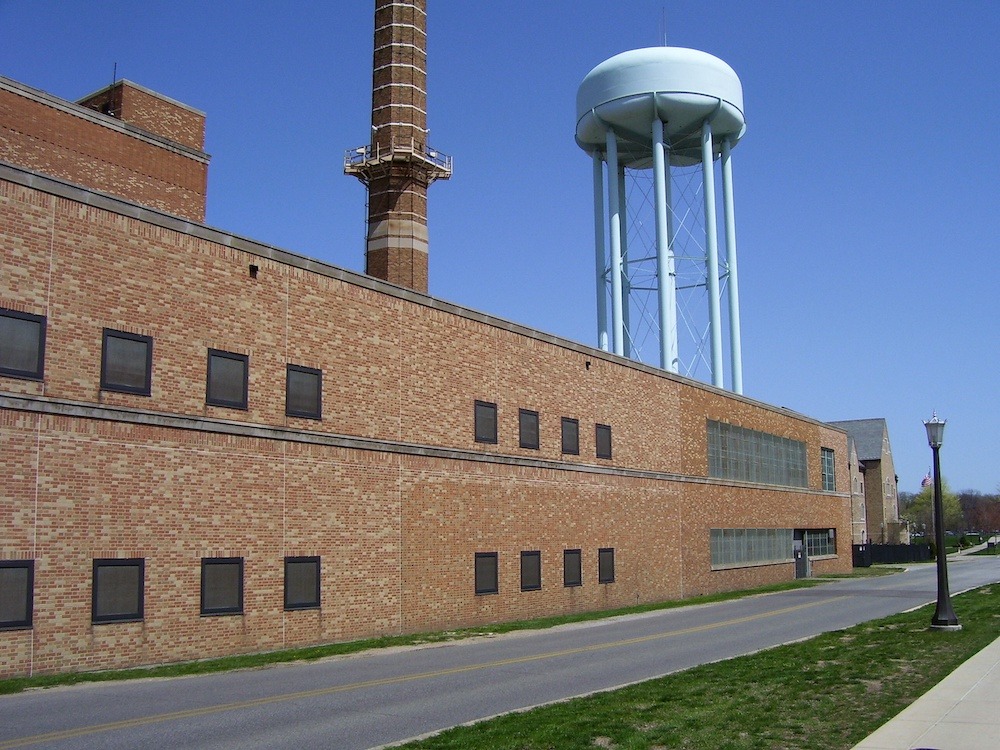Long Term Thinking — A Key To Brick Matching Success
Words: Christopher Rodermond
Words: Chris Rodermond
Photos: Masonry Cosmetics, Inc.
The demands of the day can sometimes outweigh the best long-term strategy for taking care of a structure built with brick. Many property owners and project managers can make quick decisions that have long term, and potentially detrimental consequences when working to repair, remodel, or make an addition to an existing structure. Many of those short term concessions result in bricks that will not perform well, require additional maintenance, and over time, will not even correctly match.
We talked with a brick expert who has over 35 years of experience in the brick industry, half as a manufacturer, and more recently specializing in brick matching and staining with a proprietary product and process. He reminded us that by having a well-detailed plan, it can help guarantee the materials that we need are ready, as well as avoiding the common pitfalls that can cause any complications.
Take a deep breath, slow down, and listen to the sage advice we picked up about brick matching from the expert.
As Don Foster describes, he started in this business 36 years ago with a summer job during college working in a brick plant, sweeping and packaging brick as well as putting on glaze and coatings. At that age, he was not quite sure what he wanted to do, but the management at the plant asked if he wanted to stay and work a full-time gig. So, he ended up working for nearly two decades there. Don went from finishing school between the morning and second shift to learning all the different jobs and processes around the plant. Before long he was promoted into management, foreman, and then finally into sales and executive management.
In June of 1994, Don co-founded Masonry Cosmetic, Inc. when he saw an opportunity to fix problems surrounding brick matching. For Foster, since his first days in the plant, he has been learning the subtle art and science of brick matching, and understands the right way to match bricks for a project correctly. As a problem solver, he has a fun and exciting challenge within this career. With hundreds of case studies and successful projects under his belt, making something look good after many years, is something he is still proud of.
The Problem
Brick matching is not the easiest thing to do when it comes to restoration and repairs. Poor matching can result in “'sad-looking' repairs, renovations, and additions unnecessarily," according to Foster.

His goal is to educate the market on preserving the history and inherent great qualities of brick, which are always a viable choice versus changing to another material. Many qualities surrounding the brick must be considered when choosing a replacement and matching different bricks. Great additions and repairs can be done well with or without staining, depending on how much planning, timing, and factors need to be considered to get a well-done brick match accomplished.
How complicated is the process of matching? We’ll get to that, but first, what to consider before considering staining as an option.
- Staining is not always a viable choice.
- Not all staining processes are the same. Plus, the majority of bricks are breathable. Brick are maintenance-free, you don’t have to put a coating on a brick, because that could trap moisture. Additionally, do not put a coating on it that will peel, crack, or blister. The goal is to avoid compromising the brick’s resiliency.
- A brick is not created in equal sizes.
- Bricks come in all different sizes and colors. Not only that, if people took the time to look they would be surprised at other creative considerations that could be made to match bricks. For example, matching with older buildings in the vicinity. Unfortunately, people will buy a brick and paint a brick simply because they like that color.
Knowing something about sizing is important when matching brick: Forget names, it is always safe to go by dimensions. If ever in that situation, remember to always go by the face height, the length, and then the bed depth.

- Know if the product is tried and tested for use on brick.
Some may think that since there are people that stain brick and change the color successfully, any stain that is out there must be okay to use. However, there are oil-based stains and there are acrylic paints that people water down. There are some companies that take acrylic paint and add anywhere from two or three cups to a gallon of water to it and call it a stain. They water down the acrylic paint to thin it, to make it look like a proven masonry stain. Using a stain like that is not long-lasting and can compromise the brick wall.
Think before you paint! Staining and color are the last resort.
On HGTV, they are really promoting brick painting. Now, everyone is jumping on the bandwagon and the idea to paint brick has exploded throughout the industry and is now the new normal. But without the right materials and process, it is not as easy as they make it seem. The last thing you should do is turn a maintenance-free product into a maintenance product.
When done correctly, staining and color are the last step.
 Before
Before
First, do the work to find comparable product sizes, blend bricks, and finally add color if needed. Try to get as close as you can with your base material, and leave staining and color as the last resort.
Do not wait until it is too late to think about the brick. If you do you will have to settle!
There are times when architects spec a brick they write "match-existing," instead of actually selecting a brick at that time. What Foster suggests is that somewhere early in the process someone should think about matching the existing brick and get those details into the plans and specifications.
 After
After
That way, an often 10-18 week lead time on the near-identical brick can be developed, manufactured, and transported to the job site that will be needing that brick at the correct point in the project timeline.
Alternatively, choose a brick you know a local manufacturer is making regularly.
Brick matchers are not miracle workers! The more prepared you are the less expensive the job will be to match the brick with a finish or staining process.
People that did not properly plan ahead and use their time to their advantage will have to settle for something they might not be happy with. This will allow more choices, time, and opportunities to get the right brick match.
What to do if you can not properly match the brick through production processes:
If you find that the brick is still made today, there may be a variance in the details. The same brick from the same manufacturer can look different due to variances in the clay source, and oxygen level in the kiln or using a solid fuel like coal versus gas firing, which is so much cleaner. In those instances, you may want to add a proven masonry stain to tint or shade the brick to add some matching properties to lessen the variance.
The art of blending:
Even when one color is selected, there can still be a slight range to it. Not every brick is exactly the same, and it will have its own kind of a personality or fingerprint.
With the same brick, just by the changes in the temperature in the kiln and the oxygen level, and by adding flash and burners you will get a much more diverse color range.
The last step can be to introduce more than one type of brick, but it may be wise to find compatible sizes and textures. However, it is important to note that the more varieties of brick blended together, will be considerably more unique and may be difficult to repeat in the future.
In regards to texture, one could use a smooth brick, it could be a wire cut (also known as a velour texture), vertical scratch brick, or it could be tree bark looking brick called a bark texture. There are a lot of different textures, and sometimes you will see them mixed together. But, ideally, the brick itself is exactly the same with only a different outside texture, which when blended together creates a new pattern or blended look.
Foster has seen many ratios commonly used with different brick colors. Sometimes it could be something simple like two variants and a 70:30 or 80:20 ratio. A lot of times people like to use three variants with a 60:20:20 ratio. However, sometimes people run out of ideas and are haphazardly choosing from the available stock in the yard to add up to 100 percent! In these instances, people come up short with the bricks they need, and at 80% are still asking themselves, “what else do I need?”. This is when they just pick something else to get to 100 percent. Now, they are working with a ratio of 40:20:20:20, which can come up pretty busy. Watch out for that!
Foster also never recommends anybody doing a 50:50 blend. He finds it really does look like a checkerboard, and there are so many lines going different directions all over the wall. It makes it hard to look at, but it depends on what the person really wants.

Get creative. It is not always about a perfect match:
One can pretty much create any kind of design or pattern by adding turns, bands, or putting a brick on edge, versus laying flat (call that a soldier band). In addition, some architects or masons might do something a little different in that area to break it up to show it is going from one scene to another. They tie that same theme together to pull some colors out of their main building into their addition. Architects are very creative, and they do a really wonderful job. So there is a lot to do when it comes to brick making, matching, and additions.
But for Foster, it is still awesome when someone drives by a building and does not know or notice it was an addition or match. That’s a well-done job.